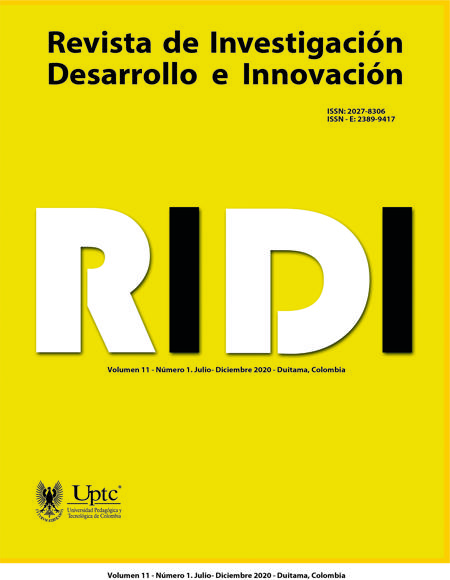Improvement of clayey subgrades through the addition of steel waste

Abstract
This work evaluates the behaviour of clay soil mixture by adding stell waste/slag, comparering with the quality criteria to be a subgrade road. The behavior of the mixture of steel waste with kaolinite clay was established with a dosage matrix of global increase, in percentages of 25, 50 and 75% through sieve number 4. The results show that the steel waste works on cohesive materials, reducing plasticity by up to 0%, and increasing the California Bearing Ratio (CBR) value, by 378.92%. It is possible to conclude that the steel waste is an excellent complement for improving the physical and mechanical properties of kaolinite clay subgrade. In a first approximation, the most recommended dosage is 25%, because the reduction of resistance to compression and plasticity index was not as high as in other dosages, but it increases the CBR index and the density.
Keywords
ground stabilization;, subgrade;, clays;, pavement;, mechanical properties
Author Biography
Miguel Ángel Ospina-García
Ingeniero Civil, Magíster en Construcción
Saieth Baudilio Chaves-Pabón
Ingeniero Civil, Doctor en Ingeniería Geodésica y Cartografía
Luis Miguel Jiménez-Sicachá
Ingeniero Civil
References
Ashango, A., & Patra, N. (2016). Behavior of Expansive Soil Treated with Steel Slag, Rice Husk Ash, and Lime. Journal of Materials in Civil Engineering, 28 (7). doi: https://doi.org/10.1061/(ASCE)MT.1943-5533.0001547
Das, B., Prakash, S., Reddy, P. S., & Misra, V. N. (2007). An overview of utilization of slag and sludge from steel industries. Resources, Conservation and Recycling. Resources, Conservation and Recycling, 50 (1), 40-57. doi: http://dx.doi.org/10.1016/j.resconrec.2006.05.008
Dhar, S., & Hussain, M. (2019). The strength and microstructural behavior of lime stabilized subgrade soil in road construction. International Journal of Geotechnical Engineering. doi: https://doi.org/10.1080/19386362.2019.1598623
Grubb, D., Malasavage, N., Smith, C., & Chrysochoou, M. (2010). Stabilized Dredged Material. II: Geomechanical Behavior. Journal of Geotechnical and Geoenvironmental Engineering, 136 (8). Recu-perado de: https://ascelibrary.org/doi/10.1061/%28ASCE%29GT.1943-5606.0000290
Instituto Nacional de Vías, INVIAS. (2013). Relaciones de humedad - Peso Unitario seco en los suelos (ensayo modificado de compactación) INVE-142-13. Bogotá, Colombia.
Instituto Nacional de Vías, INVIAS. (2019). Documentos técnicos. Recuperado de: https://www.invias.gov.co/index.php/documentos-tecnicos
Instituto Nacional de Vías, INVIAS. (2013). Mejoramiento de la subrasante con adición de materiales. Bogotá, Colombia.
Jiang, N.-J., Du, Y.-J., & Liu, K. (2018). Durability of lightweight alkali-activated ground granulated blast furnace slag (GGBS) stabilized clayey soils subjected to sulfate attack. Applied Clay Science, 161 (1), 70-75. doi: https://doi.org/10.1016/j.clay.2018.04.014
Kodicherla, S., & Nandyala, D. (2019). Influence of randomly mixed coir fibres and fly ash on stabili-zation of clayey subgrade. International Journal of Geo-Engineering, 10 (1). doi: https://doi.org/10.1186/s40703-019-0099-1
Ma, Q.-Y., Cao, Z.-M., & Yuan, P. (2018). Experimental Research on Microstructure and Physical-Mechanical Properties of Expansive Soil Stabilized with Fly Ash, Sand, and Basalt Fiber. Advances in Materials Science and Engineering, 2018, 2-13. doi: https://doi.org/10.1155/2018/9125127
Mahasneh, B. (2016). Use of Aluminum Residue and Recycled Asphalt Pavement Materials to Stabilize Silty Clay Soil. Journal of Infrastructure Systems, 22 (4). doi: https://doi.org/10.1061/(ASCE)IS.1943-555X.0000250
Méndez, A. (2012). Proyecto sobre residuos: Utilización de escorias como sustitutos de áridos (Tesis de maestría). Escuela de Organización Industrial, España. Recuperado de: https://www.eoi.es/es/file/16052/download?token=IUlvu2yy. Obtenido de Trabajo de Grado de Maes-tría. Escuela de Organización Industrial, España: https://www.eoi.es/es/file/16052/download?token=IUlvu2yy
Moreno-Anselmi, L. A., Reyes-Ortiz, Ó. J., & Ruíz-Acero, J. C. (2016). Evaluación del comportamiento mecánico de asfalto natural a partir de muestras a temperatura ambiente provenientes de Caquetá, Co-lombia. Revista de Investigación, Desarrollo e Innovación, 6 (2), 145–154. doi: http://doi.org/10.19053/20278306.3115
Ospina-García, M. Á., Moreno-Amselmí, L. Á., & Rodríguez-Polo, K. A. (2017). Análisis técnico eco-nómico del uso de concreto reciclado y el concreto convencional en Colombia. Desarrollo e innovación en ingeniería. Medellín, Colombia: Instituto antioqueño de investigación.
Ospina-García, M. Á., Moreno-Anselmí, L. Á., Sánchez-Saldana, J. R., & Chaves-Pabón, S. B. (2018). Mechanical Behavior of Masonry Concrete Units Made with Rubbish Proceeded From the Demolition of Buildings Constructed with Common Bricks. International Journal of Applied Engineering, 13 (23), 16447 - 16460.
Pilgrene-Mashifana, T., Ndubisi-Okonta, F., & Ntuli, F. (2018). Geotechnical Properties and Micro-structure of Lime-Fly Ash-Phosphogypsum-Stabilized Soil. Advances in Civil Engineering, 2018.
Proctor, D. M., Fehling, K. A., Shay, E. C., Wittenborn, J. L., Avent, C., & Bigham, R. D. (2005). Electron Microprobe Analysis and Scanning Electron Microscopy in Geology. New York: Cambridge University Press.
Radhakrishnan, G., & Anjan Kumar, M. R. (2019). Estudio modelo sobre las respuestas de carga cíclica del sistema de pavimento flexible establecido en el subrasante expansivo. En T. T., Técnicas de mejora de suelos y geosintéticos. Notas de la conferencia en Ingeniería Civil, 14.). Singapur: Springer.
Rajakumar, C., Jeyapriya, S., & Meenambal, T. (2018). Characterization and effective utilization of coal ash with geosynthetics in pavement subgrade. Indian Journal of Environmental Protection, 38, (3), 234-238. Recuperado de: http://ijep.co.in/uploads/journals/15210431621433.pdf
Rondón-Quintana, H., & Reyes-Lizcano, F. A. (2015). Pavimentos: materiales, construcción y diseño. Bogotá, Colombia.
Rondón-Quintana, H., Zafra-Mejía, J., & Chaves-Pabón, S. (2018). Behavior of a Hot Mix Asphalt us-ing Blast Furnace Slag and Gilsonite. International Journal of Applied Engineering Research, 13, (22), 15567-15573. doi: https://www.ripublication.com/ijaer18/ijaerv13n22_17.pdf
Rondon-Quintana, H., Hernández-Noguera, J., & Urazán-Bonells, C. (2016). Behavior of Gilsonite-Modified Hot Mix Asphalt by Wet and Dry Processes. Journal of Materials in Civil Engineering, 18 (02). doi: https://doi.org/10.1061/(ASCE)MT.1943-5533.0001339
Sanchez, H. (2017). Estado del Arte sobre las Escorias Negras de Horno de Arco Eléctrico y su Aplica-ciones en Pavimentos. L'esprit Ingenieux, 7 (1). Recuperado de: http://revistas.ustatunja.edu.co/index.php/lingenieux/article/view/1367
Singhi, B., Laskar, A., & Ahmed, M. (2017). Mechanical Behavior and Sulfate Resistance of Alkali Ac-tivated Stabilized Clayey Soil. Geotechnical and Geological Engineering, 35 (5), 1907-1920. doi: https://doi.org/10.1007/s10706-017-0216-x
Terzaghi, K. (1956). Soil Mechanics in Engineering Practice. John Wiley/Chapman & Hall; Edición: 9th Printing.
Yadu, L., & R.K.Tripathi. (2013). Effects of Granulated Blast Furnace Slag in the Engineering Behav-iour of Stabilized Soft Soil. Procedia Engineering, 53, 125-131. doi: https://doi.org/10.1016/j.proeng.2013.01.019
